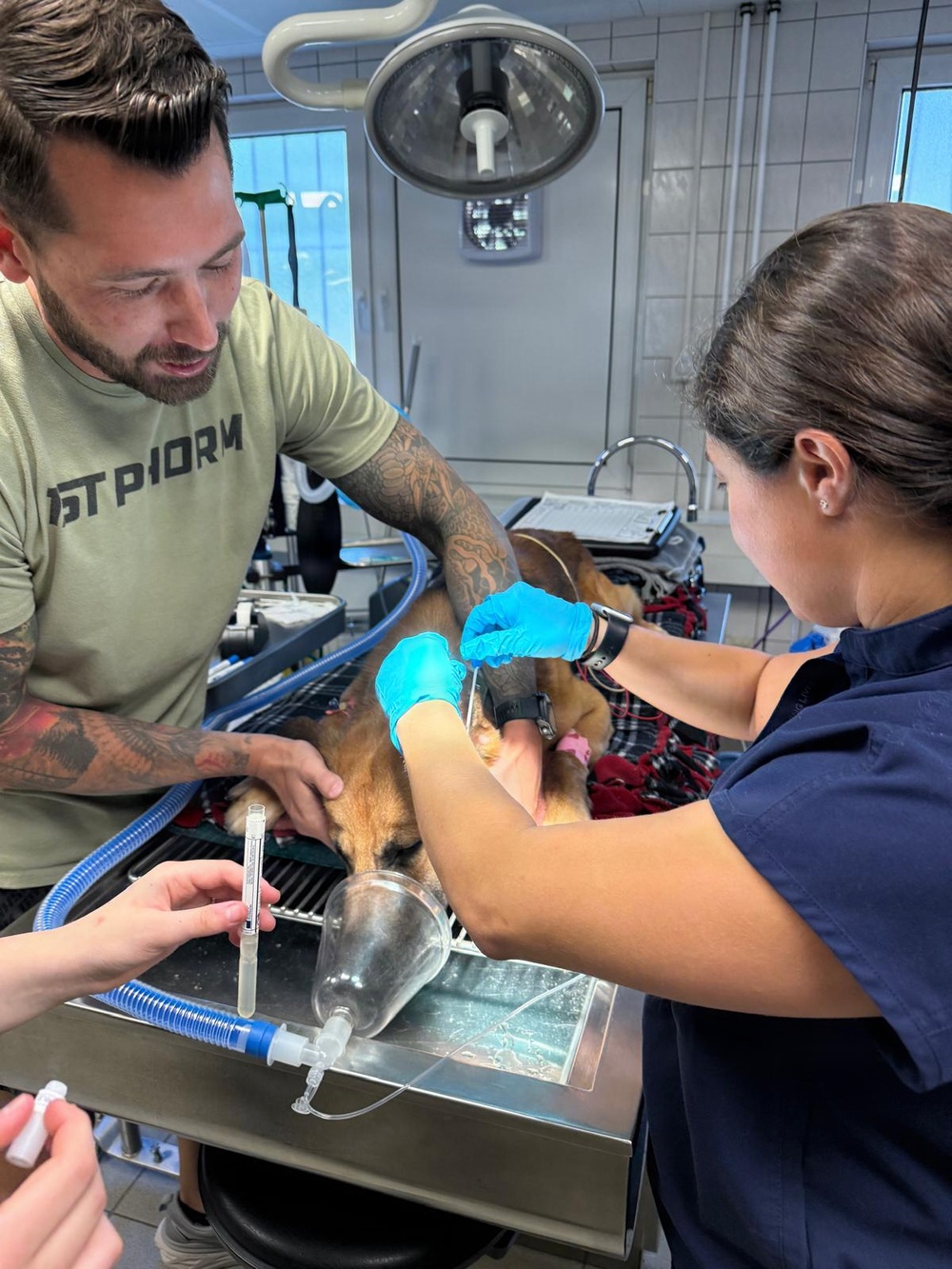
Initiated on 15 July 2025, Collaboration between the Walter Reed Army Institute of Research, Europe -Middle East (WRAIR-EME), in Georgia, and the Veterinary Medical Center Europe (VMCE) in Germany. A strategic biosurveillance initiative focused on the detection and monitoring of multidrug-resistant (MDR) ESKAPE-E+SP pathogens (including Staphylococcus pseudintermedius), in U.S. Military Working Dogs (MWDs). VMCE provides care to MWDs stationed across multiple countries, creating a unique opportunity to assess pathogen circulation in key operational environments and strengthen early warning systems for zoonotic and antimicrobial resistance (AMR) threats. Sample collection was conducted at the VMCE, operating under the Department of Defense Military Working Dog Veterinary Service (DoDMWDVS). Laboratory testing and analysis were Performed at the WRAIR-EME laboratory. This effort aims to detect emerging infectious threats in MWDs, a mission-critical population operating in challenging environments. Due to their roles in detection, security, and force protection, MWDs face increased risk of exposure to multidrug-resistant (MDR) pathogens. This collaboration focuses on identification of MDR ESKAPE-E+SP pathogens to mitigate zoonotic transmission risks to handlers and veterinary staff; preserve operational readiness; strengthen Force Health Protection (FHP); enhance military biosurveillance and inform coordinated responses across the Department of Defense (DoD). VMCE has collected clinical samples from six healthy MWDs, with ongoing efforts to sample symptomatic animals. Laboratory analysis at WRAIR-EME confirmed the presence of several ESKAPE-E+SP pathogens, including Klebsiella pneumoniae, Pseudomonas aeruginosa, Escherichia coli, Acinetobacter spp., Staphylococcus pseudintermedius, Enterococcus faecalis, and Enterococcus faecium. Most isolates of E. faecalis and E. faecium and some E. coli, and S. pseudintermedius demonstrated MDR profiles. These findings raise concern due to zoonotic transmission risks, potential reduction in MWD mission availability, and risk of global AMR spread due to frequent MWD travel. Expanding and strengthening biosurveillance operations to counter AMR threats within a mission-relevant, broader cohort of MWDs. Operational priorities include expanding sample collection across geographically and operationally diverse MWD populations, with a focus on units stationed across combatant commands, particularly within the EUCOM and CENTCOM areas of responsibility. Findings will be integrated into military veterinary and public health surveillance systems to support timely decision-making and enhance overall mission readiness.
| Date Taken: | 07.15.2025 |
| Date Posted: | 11.14.2025 11:06 |
| Photo ID: | 9380847 |
| VIRIN: | 250716-A-A1902-1001 |
| Resolution: | 1200x1600 |
| Size: | 396.18 KB |
| Location: | GE |
| Web Views: | 13 |
| Downloads: | 1 |

This work, Operational Collaboration Effort Between WRAIR-EME and VMCE on AMR Surveillance in U.S. MWDs [Image 12 of 12], by CPT Daniel Kankam, identified by DVIDS, must comply with the restrictions shown on https://www.dvidshub.net/about/copyright.